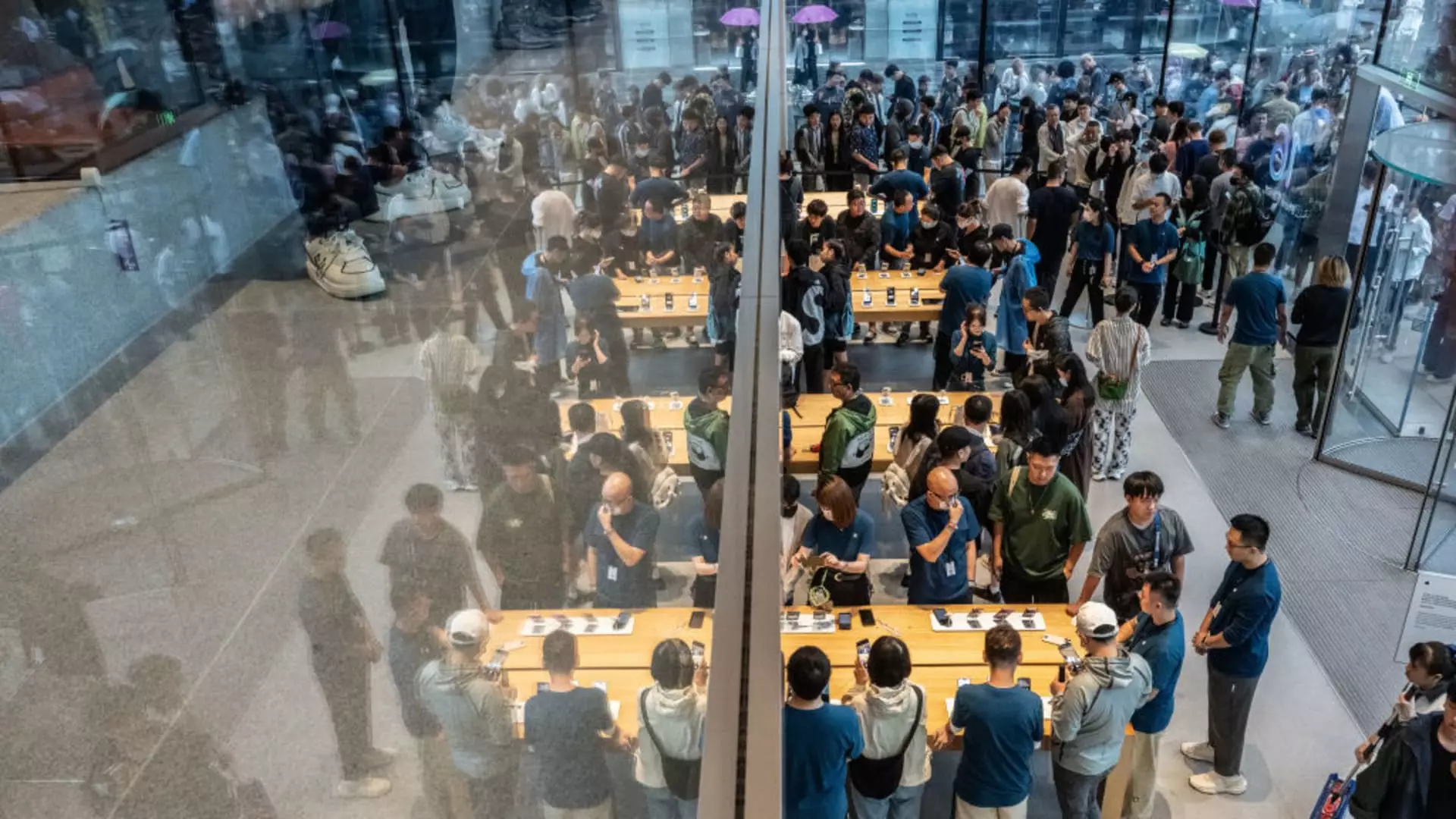In the rapidly evolving landscape of smartphones, the rivalry between Apple and Huawei has intensified, particularly within the Chinese market. The recent launches of the iPhone 16 series and Huawei’s revolutionary Mate XT have fueled interest among consumers, presenting them with extravagant options that cater to luxury as well as technological advancements. This article analyzes the market dynamics and consumer perceptions that are emerging from this technological showdown, revealing much about the changing tides in mobile preferences.
The backdrop to this fierce competition is a significant shift in market share within the Chinese smartphone industry. After several years of dominance, Apple has fallen out of the top five, leaving space for local competitors, including Huawei, which has rebounded from U.S. sanctions imposed in 2019. Recent reports from Canalys indicate that Huawei is now ranked fourth in terms of market share in the China smartphone market as of the second quarter of 2023. This shift may not merely reflect Huawei’s recovery but also a growing trend among Chinese consumers who are increasingly prioritizing national brands over foreign competitors.
Huawei’s strategy to engage with luxury consumers through its higher-end offerings—like the Mate XT, which boasts cutting-edge trifold technology—places the company in direct competition with premium devices from Apple. The Mate XT, priced at over $2,800, poses a stark contrast to the iPhone 16 series, which starts at a more accessible $799. These price discrepancies challenge the perception of value among consumers, suggesting that features and brand loyalty may trump cost-effectiveness in high-end purchases.
Spot checks conducted by media outlets revealed intriguing consumer sentiments regarding these new devices. An overwhelming majority of individuals expressed interest in both Apple and Huawei’s offerings, demonstrating that the brands have effectively captured the attention of affluent users despite varying price points. Notably, conversations with consumers like Yang and Wang highlighted a duality in choice; many iPhone users are keen to explore Huawei’s innovative features as they perceive a stagnation in Apple’s advancements.
Yang, for example, contemplated purchasing the Mate XT not only to experience its unique attributes but also as an investment opportunity, illustrating that consumers’ motivations can intersect around personal use and potential resale value. This mindset underscores a savvy consumer base that balances technology with market economics, indicating a shift from mere brand loyalty to a more utilitarian, investment-oriented approach towards technology purchases.
Interestingly, while Apple launched its flagship phone amidst flurries of excitement—with lines forming even before store openings—Huawei’s approach appeared more subdued. Reports of negligible waiting lines at Huawei stores suggest that either the marketing or the consumer anticipation surrounding their new offerings may not entirely match that of Apple. However, this doesn’t discount the commitment of tech enthusiasts willing to engage with Huawei’s latest innovations, signifying an evolving market landscape characterized by diverse consumer interests.
The secondary market for smartphones has gained prominence as consumers increasingly choose to buy pre-owned devices. The staggering price differences between used models of the Mate XT and iPhone 16 Pro Max reflect an emerging narrative around perceived value and brand prestige. Resale values for the Mate XT soared to more than $8,500, while the iPhone models fetched significantly lower prices, indicating a potentially inflated market for Huawei’s luxury device amidst perception-driven demand.
This indication also raises questions about the longevity of Apple’s brand appeal in the face of competitive innovation from Huawei. The latter’s marketing push for groundbreaking features has stirred intrigue among consumers looking for the next big thing—even those already loyal to Apple.
As the clash between Apple and Huawei unfolds, it becomes evident that consumer preferences in China are increasingly multifaceted, bridging the gap between luxury and utility. Both brands must navigate a landscape shifting towards innovation that resonates with a more discerning public, exploring partnerships beyond traditional smartphone functionalities to carve their paths forward.
Ultimately, this competition might not only dictate sales numbers but also redefine what it means to be a premium smartphone brand in an era where every choice reflects personal identity and financial savvy. The question remains: will brand loyalty continue to reign, or will the allure of innovation tip the scales in this ongoing battle?

